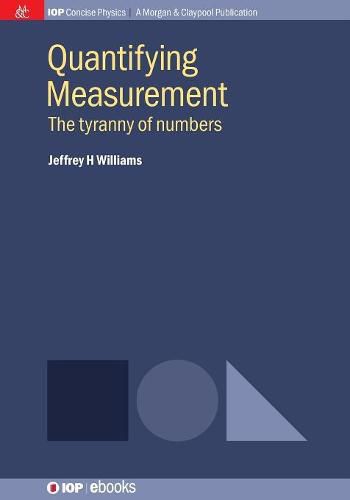Readings Newsletter
Become a Readings Member to make your shopping experience even easier.
Sign in or sign up for free!
You’re not far away from qualifying for FREE standard shipping within Australia
You’ve qualified for FREE standard shipping within Australia
The cart is loading…






This title is printed to order. This book may have been self-published. If so, we cannot guarantee the quality of the content. In the main most books will have gone through the editing process however some may not. We therefore suggest that you be aware of this before ordering this book. If in doubt check either the author or publisher’s details as we are unable to accept any returns unless they are faulty. Please contact us if you have any questions.
Measurements and experiments are made each and every day, in fields as disparate as particle physics, chemistry, economics and medicine, but have you ever wondered why it is that a particular experiment has been designed to be the way it is. Indeed, how do you design an experiment to measure something whose value is unknown, and what should your considerations be on deciding whether an experiment has yielded the sought after, or indeed any useful result? These are old questions, and they are the reason behind this volume. We will explore the origins of the methods of data analysis that are today routinely applied to all measurements, but which were unknown before the mid-19th Century. Anyone who is interested in the relationship between the precision and accuracy of measurements will find this volume useful. Whether you are a physicist, a chemist, a social scientist, or a student studying one of these subjects, you will discover that the basis of measurement is the struggle to identify the needle of useful data hidden in the haystack of obscuring background noise.
$9.00 standard shipping within Australia
FREE standard shipping within Australia for orders over $100.00
Express & International shipping calculated at checkout
This title is printed to order. This book may have been self-published. If so, we cannot guarantee the quality of the content. In the main most books will have gone through the editing process however some may not. We therefore suggest that you be aware of this before ordering this book. If in doubt check either the author or publisher’s details as we are unable to accept any returns unless they are faulty. Please contact us if you have any questions.
Measurements and experiments are made each and every day, in fields as disparate as particle physics, chemistry, economics and medicine, but have you ever wondered why it is that a particular experiment has been designed to be the way it is. Indeed, how do you design an experiment to measure something whose value is unknown, and what should your considerations be on deciding whether an experiment has yielded the sought after, or indeed any useful result? These are old questions, and they are the reason behind this volume. We will explore the origins of the methods of data analysis that are today routinely applied to all measurements, but which were unknown before the mid-19th Century. Anyone who is interested in the relationship between the precision and accuracy of measurements will find this volume useful. Whether you are a physicist, a chemist, a social scientist, or a student studying one of these subjects, you will discover that the basis of measurement is the struggle to identify the needle of useful data hidden in the haystack of obscuring background noise.